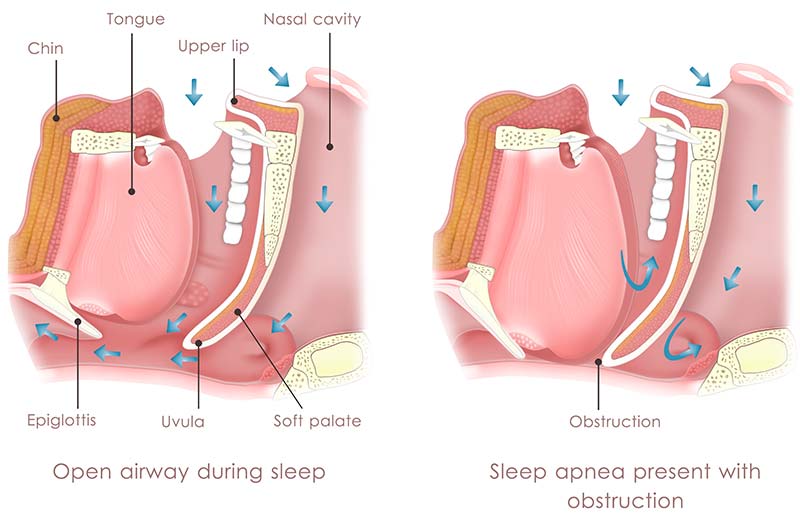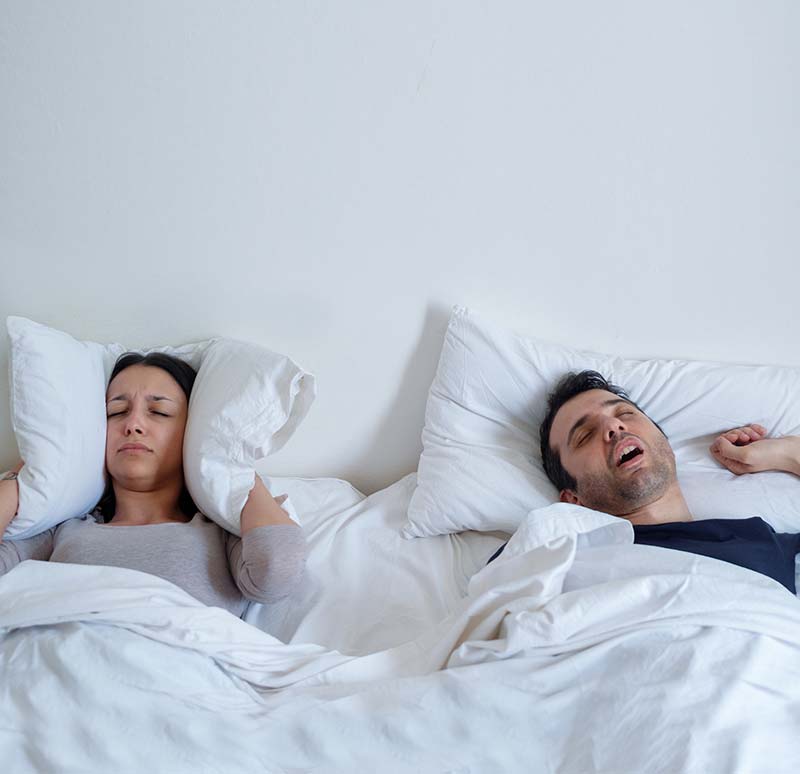

Breathing disruptions experienced when you have sleep apnea can present many serious and potentially life-threatening risks.
If initial efforts that might include lifestyle improvements such as losing weight or quitting smoking, being treated for related allergy issues, or the use of a continuous positive airway pressure (CPAP) device aren’t effective, sleep apnea surgery may become an option.
Depending on the severity of your symptoms, surgery may be a multi-step process.
UPPP (Uvulopalatopharyngoplasty)
This procedure involves the removal of tissue from the back of your mouth and top of your throat. In addition to trimming down the uvula and soft palate to improve airflow, tonsils and adenoids may be removed. UPPP may not be fully effective if you have obstructive sleep apnea (OSA).
Radiofrequency Ablation
Some sleep apnea sufferers are unable to tolerate the regular use of airway pressure devices. If you are one of them, you may benefit from radiofrequency volumetric tissue reduction (RFVTR). With this radiofrequency ablation procedure, tissues around the throat are shrunk and tightened with controlled heat energy applications (cauterization). This procedure tends to work best on individuals with mild to moderate sleep apnea.


Jaw Repositioning
The jaw is moved forward with this type of sleep apnea surgery. What this does is create more space for the tongue and soft palate, which may improve airflow enough to reduce troublesome sleep apnea issues. Genioglossus advancement is another jaw-related procedure that involves moving a structure that attaches to your tongue muscle forward by repositioning a small piece of jaw bone that’s linked to your tongue.
Turbinate Reduction Combined with Septoplasty
Turbinates are sausage-shaped structures in your nose that help filter the air you breathe. Turbinate reduction reduces the size of these structures, which sometimes become enlarged due to allergies and other sources of nasal irritation. Septoplasty is done to straighten the tissue that divides your nostrils (nasal septum). These procedures are sometimes performed together to improve airflow and reduce sleep apnea issues.
Nerve Stimulation and Other Surgical Options
Nerve stimulation involves the insertion of an electrical stimulation device. It targets the hypoglossal nerve, which controls tongue movement. Some patients also notice improvements with palatal implants that stiffen the soft palate enough to prevent blockage of the airway when sleeping. Some other options recommended at Nasal & Sinus Surgery Center to minimize sleep apnea symptoms include:
- Hyoid suspension to provide more space for breathing in the throat
- Laser-assisted uvuloplasty (LAUP) to tighten the soft palate and trim the uvula
- Weight loss surgery if your sleep apnea is related to excess weight
- A tracheostomy to create an artificial opening in the neck that’s covered during the day and opened at night – usually reserved as an option only if other treatments aren’t effective
Even if you do have sleep apnea surgery, you might still need to use a CPAP device or a similar airway pressure device to maintain optimal airflow. However, you may be able to enhance your post-surgery results by making an effort to get regular moderate exercise, avoiding excessive alcohol consumption, not relying on sleeping pills, and sleeping on your side or stomach instead of on your back.
